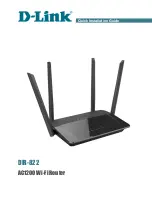
• Wear an ESD-preventative wrist strap that is connected to an earth ground whenever handling transceivers.
The router is typically grounded during installation and provides an ESD port to which you can connect
your wrist strap.
• Do not remove and insert a transceiver more often than is necessary. Repeated removals and insertions
can shorten its useful life.
• Keep the transceivers and fiber-optic cables clean and dust free to maintain high signal accuracy and to
prevent damage to the connectors. Attenuation (loss of light) is increased by contamination and should
be kept below 0.35 dB.
• Clean these parts before installation to prevent dust from scratching the fiber-optic cable ends.
• Clean the connectors regularly; the required frequency for cleaning depends upon the environment.
In addition, clean connectors when they are exposed to dust or accidentally touched. Both wet and
dry cleaning techniques can be effective; refer to your site's fiber-optic connection cleaning
procedures.
• Do not touch the ends of connectors. Touching the ends can leave fingerprints and cause other
contamination.
• Inspect routinely for dust and damage. If you suspect damage, clean and then inspect fiber ends under a
microscope to determine if damage has occurred.
Connect to the Console Port
• The router must be fully installed in its rack, connected to a power source, and grounded.
• The necessary cabling for the console, management, and network connections must be available.
• An RJ-45 rollover cable and DB9F/RJ-45 adapter are provided in the router accessory kit.
• Network cabling should already be routed to the location of the installed router.
Before you create a network management connection for the router or connect the router to the network, you
must create a local management connection through a console terminal and configure an IP address for the
router. You also can use the console to perform the following functions (each of which can be performed
through the management interface after you make that connection):
• Configure the router using the command-line interface (CLI).
• Monitor network statistics and errors.
• Configure Simple Network Management Protocol (SNMP) agent parameters.
• Download software updates.
The system console port is an RJ-45 receptacle for connecting a data terminal to perform the initial configuration
of Cisco NCS 540 fixed-port chassis. The console cable is shipped with the hardware.
Only RJ45 to DB-9 adapter cable is provided in the package.
Note
Install the Device
34
Install the Device
Connect to the Console Port









































